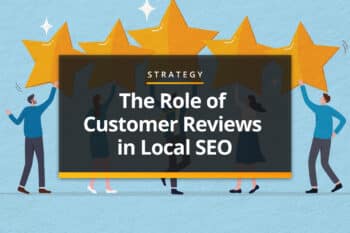
Let’s say what nobody else wants to say out loud:
You know marketing is important.
But you’re already juggling 57 other things.
Hiring a full team? Building out a strategy? Investing in tools, content, and campaigns? It feels overwhelming. Expensive. Maybe even a little bit like a gamble.
But here’s the good news: You don’t need a full marketing team to get real results. You just need a better plan and a smarter approach that doesn’t leave you doing all the work yourself.
This article is for the business owner who wants to grow but doesn’t have a marketing team (yet). They may never have a full-time marketing team, and that’s ok. Let’s walk through what you can do and how to do it in a way that respects your time, your budget, and your bottom line.
Let’s Start with the Obvious: You’re Not Alone

Many $5M–$25M businesses don’t have a full-blown internal marketing department.
They might have:
- One marketing generalist (who also handles social media, tradeshow logistics, and ordering polos)
- A salesperson trying to moonlight as a content creator
- Or, most commonly: nothing. No team. No plan. No capacity.
If that’s you, take a breath. You’re not behind. But you are at a fork in the road.
The path forward isn’t “hire a CMO” or “build a 10-person team.”
The path forward is: start small, be intentional, and get expert help where it counts.
But before we go there, let’s talk about what’s really holding people back.
Why Most Owners Don’t Have a Marketing Team
In our experience, there are three big reasons business owners hesitate:
1. “Nobody Understands Our Business Like I Do”
This one’s huge and totally fair.
You’ve got years (maybe decades) of industry-specific knowledge. You’ve had hundreds of conversations with clients. You know your company’s capabilities, quirks, and secret sauce like the back of your hand.
So when someone says “just hire a marketer,” your brain short-circuits.
You’ve tried that. And the results were… frustrating.
Maybe you:
- Hired an agency that delivered cookie-cutter work
- Brought in a junior marketer who needed more training than you had time for
- Tried to “offload” marketing and ended up rewriting everything yourself anyway
And you walked away thinking, “This is why I do it myself.”
Here’s the shift: It’s not about offloading marketing. It’s about collaborating.
The right partner doesn’t expect you to hand over your brain on a silver platter.
They come in with curiosity, questions, structure, and process to pull the right info out of your head without you needing to do all the heavy lifting.
Think of it like this: a good surgeon doesn’t cut you open without first getting labs, scans, and a diagnosis. Good marketing starts the same way—with discovery, due diligence, and dialogue.
2. “I Can’t Afford to Hire a Whole Team”

True. And you probably shouldn’t.
A single marketing hire for $40K isn’t going to be an expert in SEO, content strategy, email campaigns, Google Ads, analytics, and HubSpot automation.
And let’s be real—they’ll probably also end up answering phones or helping your IT person with printer issues.
On the flip side, building a full internal team with writers, designers, digital strategists, and data analysts? You’re into $200K–$400K+ in payroll before you even start producing work.
That’s where outsourcing the right way comes in.
You don’t need an in-house team. You need fractional access to a cross-functional group of specialists who understand your industry, your goals, and how to move the needle without wasting your money.
And yes, you can do that at a manageable monthly investment—one that’s tied to outcomes, not overhead.
3. “We Tried This Before and It Didn’t Work”
Yep. And we know why.
Usually, it’s because the relationship was set up to fail from day one:
- No real discovery process
- No clear goals
- No collaboration between leadership, sales, and marketing
- Or worst of all, no one was tracking what success even looked like
Marketing without metrics isn’t marketing. It’s guesswork.
And your gut already told you it wasn’t working. Now we build something better.
What Finally Pushes Owners to Act?
If we had to boil it down, most owners finally pull the trigger on marketing when one of two things happens:
1. Their Competitors Start Showing Up
Maybe it’s a competitor with a slick new website, running ads, showing up in search results, and popping up in LinkedIn feeds. You’re seeing their name more. And so are your customers.
You realize: they’re not just modern—they’re visible.
And you’re not.
2. Their Website (or Strategy) Feels Outdated
It’s not just the design. It’s a fact that it’s hard to update. The messaging doesn’t reflect who you are now. There’s no clear way to generate leads or support your sales team.
The site isn’t just stale—it’s costing you opportunities.
The Real “Aha” Moments That Change Minds

We’ve seen it time and time again: the mindset shift happens when the leads start showing up.
One client, massively successful, eight figures in annual revenue, had never received a qualified lead from their website. Not one.
They didn’t even believe that was a thing that could happen. “Nobody fills out forms,” they said. “It’s all noise or spam.”
Fast-forward six months into a real strategy, and their team was fielding high-quality quote requests from the exact type of prospects they’d dreamed of working with.
The kicker? The leads didn’t come from some expensive ad campaign. They came from helpful, targeted content that we built in collaboration with their team—content that spoke to their buyers, answered the right questions, and invited action.
That’s what good marketing does.
So… What Should You Do If You Don’t Have a Marketing Team?
Let’s get practical. Here’s a blueprint you can follow, even without internal staff.
Step 1: Appoint a Point Person
Even if it’s not their full-time job, someone inside your company needs to:
- Coordinate with your outside partner or freelancer
- Approve content, messaging, and budget
- Keep things moving
If that’s you for now, that’s fine. But get clear on it. “Marketing by committee” is how things stall.
Step 2: Set Goals That Tie to Revenue
Forget vanity metrics like followers or impressions. Set targets like:
- 10 qualified leads/month
- $100K in new pipeline each quarter
- 20% increase in proposals sent
Then work backward: What channels, offers, or campaigns are most likely to move that number?
That’s your roadmap.
Step 3: Start Small—But Smart
You don’t need a full inbound program on day one. You just need to start with something that helps your sales team today.
Try:
- A single landing page with a downloadable quote request form
- A case study that helps sales close deals
- A homepage rewrite with clearer calls to action
Then build from there.
Step 4: Don’t Reinvent the Wheel—Refine It
Good marketing is rarely a lightning bolt. It’s more like carpentry:
- Measure
- Cut
- Sand
- Repeat
You put something in the market. See how it performs. Improve the parts that work. Cut the parts that don’t.
That’s how you get better over time. And that’s where partnering with a team that’s done this hundreds of times really helps.
Step 5: Think of Marketing as Sales Enablement
If every marketing piece you create doesn’t help your sales team, why are you doing it?
Your website, brochures, email follow-ups, whitepapers, and case studies should all make it easier for your salespeople to:
- Get in the door
- Build trust
- Close deals faster
Marketing isn’t a separate department. It’s fuel for your sales engine.
One Story That Says It All
We had a client who stuck with us for eight years.
For the first several years, they were running on a legacy website platform from the early 2000s. They paid us a modest monthly fee—just enough to keep the lights on with basic SEO. Nothing too ambitious.
Then something shifted.
They started seeing their competitors upgrade. They began to recognize the limitations of their outdated site. They saw distributors investing in marketing and realized they were behind.
They came to us with a question: “What would it take to modernize?”
We built them a new site with a clean design, clear messaging, and strong calls to action. Then came the lead generation campaigns. Bit by bit, they increased their investment, each time asking, “If we spend more, what could we do next?”
Today, they’re investing significantly more each month, but only because every dollar spent has consistently delivered ROI. They’re growing year-over-year—even in a shaky economy. They have a marketing program that’s measurable, scalable, and profitable.
And they didn’t start there. They started with $500/month.
What Success Looks Like After 6–12 Months
Here’s what we see from clients who stick with it:
- More qualified leads (Not just more traffic. More right-fit prospects.)
- Shorter sales cycles (Buyers show up informed and ready.)
- Clearer data (You know what’s working—and what’s not.)
- Better team morale (Sales isn’t starting from scratch every time.)
- Smarter spending (You stop wasting money on what doesn’t work.)
Most importantly? You stop guessing.
You begin to understand your audience, your messaging, your funnel, and how to make it better over time.
It’s Not About Having a Marketing Team. It’s About Having a Marketing System.

The truth is, marketing is a discipline. Not a campaign. Not a one-time effort. A discipline.
It’s PDCA: Plan, Do, Check, Act. Over and over again.
Most business owners don’t want to “do marketing.” They want growth. They want their sales team to have support. They want to feel confident they’re doing the right things to bring in the right customers.
You can have that—even without an internal team.
But you need a partner who gets it. Who doesn’t expect you to spoon-feed them? Who can step in with process, strategy, and the right questions? Who respects what you’ve built and helps you build on it, not bulldoze it?
Final Thoughts (From One Business Owner to Another)
If you’re reading this, you probably already know it’s time.
You’re smart. You’ve grown a business, you’ve weathered some storms, and you’ve made good decisions. This is just the next one.
And no, you don’t have to figure it out alone.
Start with what you can do today. Build from there.
Whether you bring someone on, partner with an agency, or just block off two hours a week to get moving, start.
You’ll be surprised how far you can go with the right strategy, the right partner, and the discipline to keep showing up.
Most Popular Articles

Seeing Favicons in Your Google Search Results? Here’s Why…
Have you noticed anything different in your Google Search results lately? Google added tiny favicon icons to its organic search results in January. It was…

Business Growth and Digital Marketing News & Tips 11-17-24
Are you encouraging and rewarding innovation? Lee Cockerell is the former Executive Vice President of Operations at Walt Disney World. A lover of traditional red…

Business Growth and Digital Marketing News & Tips 11-27-24
A culture of gratitude "Feeling gratitude and not expressing it is like wrapping a present and not giving it." – William Arthur Ward Beyond being…








